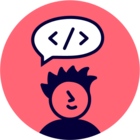Hi there,
I’d love to hear some creative ways for how to keep people’s attention/focus during a workshop, whilst giving them enough “quiet” and individual time to work on an activity. So for example…..while setting people free to brainstorm for 10 minutes, I worry that given too much time, some people may drift off to do other work (check email, go get a coffee, etc). Particularly in this virtual space, where we’re not all together in a room. I want to give people enough time/space to work, but not risk losing their overall attention?
Any facilitation tips on ways to do this?
Many thanks,
Adam




